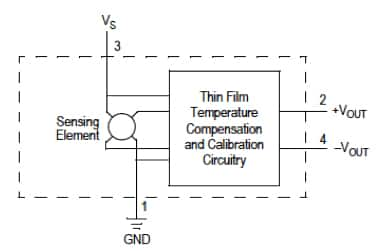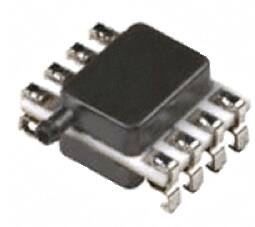Key Criteria in Choosing a Pressure Sensor
投稿人:电子产品
2012-11-08
Whether choosing a sensor for high-volume low-performance commodity-type applications, one to work effectively in the harshest environments on (or off) the planet, or one that provides the utmost in accuracy, how do you decide what you need? Let’s look at this generically to start.
Top down, the most impact on what you end up with from the sensor point of view are sensor functions, which will in themselves mandate different requirements affecting your selection. For health applications, for example, safety-critical reliability may be a life-or-death consideration, yet the majority of medical applications for sensors may fall into the non-critical category and therefore require a high-volume, low-performance solution.
For any sensor type, the main categories of consideration will be the environment, accuracy required, cost, size, reliability necessary, redundancy, energy consumption, and finally, the application at hand. Will it fit into a device; need to warn of impact; monitor vibration, temperature, or humidity, among a few possibilities?
How smart must the sensor be? Smart sensors measure and process data, possibly make decisions, and provide feedback. These actions require intelligence, which may need to be combined with a robust continence that can withstand hazardous environments. Can you see the price tag climb?
Before moving further into a criteria discussion, something else to be considered is how involved you actually want to become in sensor calibration. Over the past several years, a wealth of pre-calibrated options with fantastic repeatability has hit the shelves, which has been a blessing for many design engineers who either didn’t have the time, or the experience to do it themselves. Additional features were built in as well—temperature compensation, advances in materials, miniaturization and functional integration that facilitates sensor integration.
For the purposes of not being too confusing given the myriad of sensor types, and also given that we don’t have the luxury of textbook-sized informational space, we’ll concentrate for the remainder of this article on pressure sensors.
We’ll begin with a checklist of questions you’ll need to ask, not presented in any particular order:
- Do your measurements need to be in volts or in milliamps? And what type of output works best?
- Your options will vary between low (mv/V)/high (VDC) voltage analog, current, digital and wireless output.
- Define the type of pressure you want to measure: gage (zero-referenced against ambient air pressure), absolute (zero-referenced against a perfect vacuum), differential (the difference in pressure between two points).
- What is your sampling environment?
- Is the sensor you are considering rated only for benign environments such as clean, dry air? Or is it OK in a difficult/corrosive environment?
- How much money do you have to spend?
- Pressure sensor suppliers offer products from a few dollars to thousands of dollars.
- Are there any extremes that you’re facing (temperature, corrosive liquids, miniscule sizes)?
- Is the sensor intended for indoor/outdoor use, will there be shock, vibration, electrical interference, or hazardous conditions?
- Given the types of sensors in the category you’re dealing with, what are the features/benefits of each?
- Are there sensor package prerequisites?
- The package will dictate your available space requirements and the types of environmental protection needed.
- Non-conditioned or conditioned?
- Non-conditioned pressure transducers contain the circuitry to make a pressure measurement but none of the equipment or hardware to properly condition the signal for measurement by a digital device. The voltage range for these sensors is in the millivolt range.
- Conditioned sensors have the circuitry for measurement, as well as the components for conditioning the signal all in the sensor unit itself. The housing will contain an instrumentation amplifier, filter, and excitation leads, making the physical sensor larger and usually a more expensive component. The output of a sensor is usually 0-10 V making it ready for connection to a 0-10 V DAQ board.
- Does the pressure sensor have internal regulators to provide a stabilized input to the electronic circuitry under varying supply voltages?
- What are you gaining (or throwing away) for each possible sensor candidate?
- What about the rest of the story? Cables, connectors, etc.?
- If the sensor needs to be removed from the system for re-calibration or system maintenance, can the connector be unplugged and the sensor un-threaded? Are the connectors an integral part of the pressure sensor?
- In high vibration environments, you may require an inline connector — a connector at the end of a length of wire - to reduce stress on the back-end of the sensor.
- If the sensor needs to be removed from the system for re-calibration or system maintenance, can the connector be unplugged and the sensor un-threaded? Are the connectors an integral part of the pressure sensor?
- What is the minimum accuracy you can deal with? Accuracy is the difference (error) between the true value and the indicated value expressed as percent. Static accuracy, expressed as +/- percentage of full scale output, combines the effects of linearity, hysteresis and repeatability.
- Linearity is the deviation of a calibration curve from a specified straight line.
- Hysteresis is the difference between the ON-point pressure and OFF-point pressure for output expressed as a percentage of the pressure full scale.
- Repeatability is the ability to reproduce output readings when the same pressure is applied repeatedly, under the same conditions. Keep in mind that if the output of the sensor has to travel a great distance, the signal will lose its amplitude and accuracy due to resistance of the cable.
- What is the resolution you require?
- Will your design require multiple sensors?
- Do the competitive solutions you’re looking at provide a one-stop shop for sensors?
Let’s look at a few examples of pressure sensors/transducers currently on the market. You’ll be able to back out, or reverse engineer if you will, what the criteria would be for selecting each based on what the sensors offer in terms of reliability, bells and whistles, and ultimately the applications where they’re used.
Take for instance, Freescale Semiconductor’s MXPH6400A Series high temperature accuracy integrated silicon pressure sensor for measuring absolute pressure (Figure 1), with on-chip signal conditioning, temperature compensation and calibration. This is a good example of integration with on-chip, bipolar op amp circuitry and thin film resistor networks to provide a high output signal. It features a small form factor combined with high reliability on-chip integration.

Figure 1: Fully Integrated Pressure Sensor Schematic (Courtesy of Freescale).
The Freescale piezoresistive transducer being considered is a monolithic, signal conditioned, silicon pressure sensor featuring improved accuracy at high temperatures. Available in small and “super small” outline packages, it has a 1.5 percent maximum error over 0° to 85° and is suitable for MCU- or MPU-based systems. Other features of note include temperature compensation from -40°C to +125°C, and a durable thermoplastic surface mount package. As such, it is used for industrial controls, engine control/manifold absolute pressure (MAP) and to measure liquefied petroleum gas (LPG).
In comparison, the MPS2200 Series by Freescale (Figure 2) are silicon piezoresistive pressure sensors that provide a highly accurate and linear voltage output directly proportional to the applied pressure. These sensors offer a single monolithic silicon diaphragm with the strain gauge and a thin-film resistor network integrated on-chip.

Figure 2: Temperature compensated and calibrated pressure sensor schematic (Courtesy of Freescale).
The chip is laser trimmed for precise span and offset calibration and temperature compensation. Features include: temperature compensated over 0°C to +85°C, ±0.25 percent linearity (MPX2200D), easy-to-use chip carrier package options, and absolute, differential and gauge options. It is designed for use in applications such as pump/motor controllers, robotics, level indicators, medical diagnostics, pressure switching, barometers, and altimeters.
The Honeywell TruStability silicon pressure sensors HSC Series (Figure 3) has an accuracy level that is obvious by the applications that use it: airflow monitors, anesthesia machines, blood analysis machines, gas chromatography, kidney dialysis machines, respiratory machines, and ventilators are among the medical applications, while industrial uses include flow calibrators, gas flow instrumentation, pneumatic controls, and HVAC. The datasheet quotes an extremely tight accuracy of 0.25 percent FSS BFSL (Full Scale Span Best Fit Straight Line).

Figure 3: The Honeywell TruStability HSC Series features at ±1 percent Total Error Band (Courtesy of TruStability).
Of great importance for those tasked with selecting pressure sensors, TruStability first introduced the concept of always indicating total error band - in this case ±1 percent - a comprehensive, clear and meaningful measurement that shows the sensor’s true accuracy over a compensated range. This measurement eliminates the need and the guesswork involved in individually testing and calibrating every sensor. Even when swapped out, the total error band indicates the possible deviation.
The TruStability High Accuracy Silicon Ceramic sensor is fully calibrated and temperature compensated for sensor offset, sensitivity, temperature effects, and non-linearity using an on-board ASIC. Calibrated output values for pressure are updated at approximately 1 kHz. These sensors measure absolute, differential, and gage pressures.
In summary, the tips and example sensors discussed can be used as guidelines to help point you in the right direction when selecting your pressure sensor. Always keep your goal in mind when you consider what you need in your sensor: to end up with one that provides exactly what you need without paying more for what you really don’t need.
免责声明:各个作者和/或论坛参与者在本网站发表的观点、看法和意见不代表 DigiKey 的观点、看法和意见,也不代表 DigiKey 官方政策。









